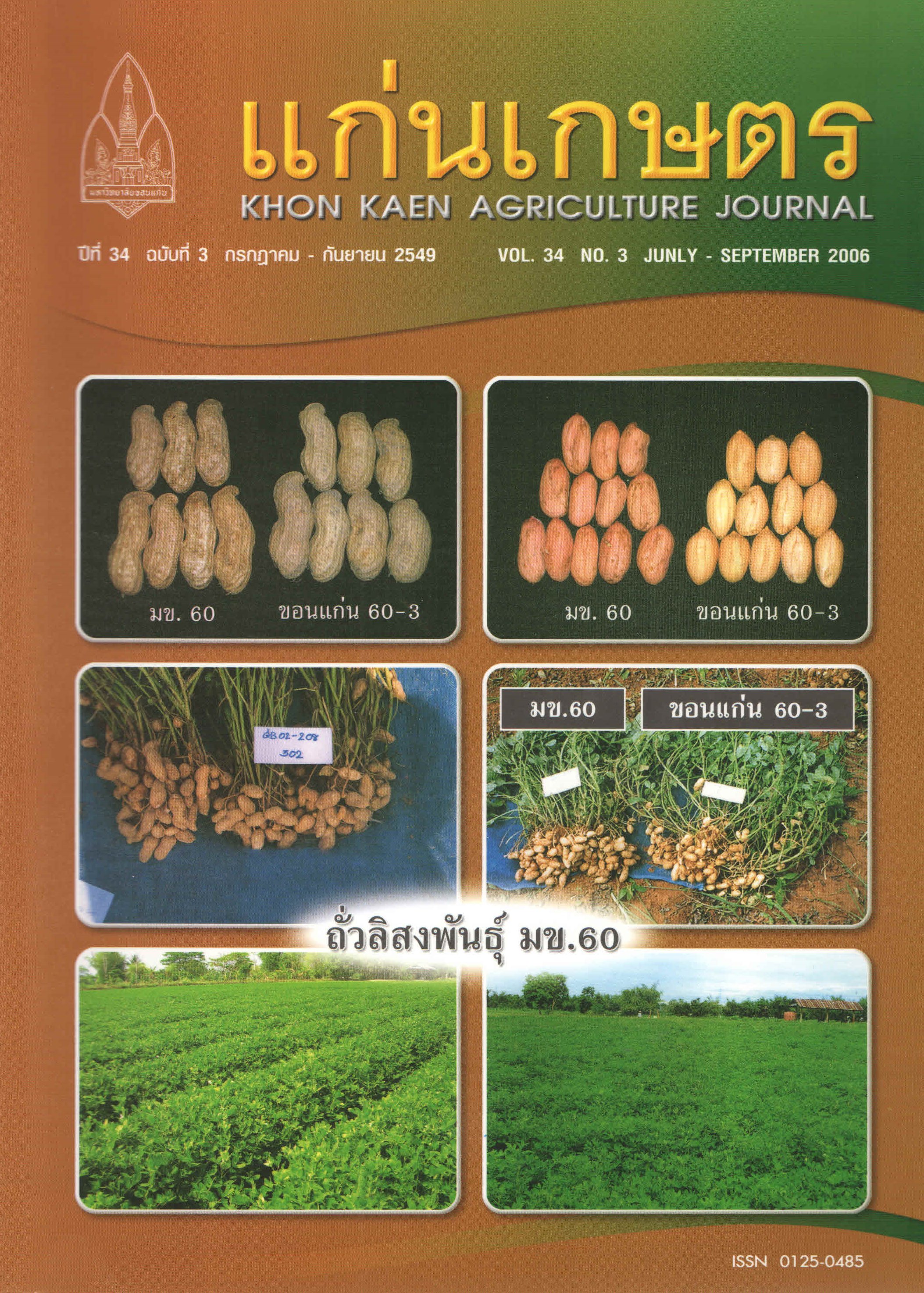Participatory variety selection (PVS) to assess farmer preferences of traditional glutinous rice varieties in the Lao PDR
Main Article Content
บทคัดย่อ
The trial on Participatory Variety Selection (PVS) was conducted on 9 sites in wet season 2004.Twenty-two traditional varieties, with diverse agronomic characteristics were used to grow in farmersû fields.
The trials conducted in the first year allow us to redefine growing conditions of target rice growing areasand could be used to select the suitable location to evaluate traditional glutinous varieties (TVs). Sites selected forconducting the trials covered a wide range of main rice planting areas in all three regions: northern, central andsouthern regions with 3 sites in each region.
Participatory variety selection (PVS) approach, in which trials were conducted, is useful in allowingresearchers to interact and closely work with farmers and helps breeders understand better about variability of thegrowing conditions in target areas and responses of cultivars under both inside and outside their origin. It was clearthat diverse locations with different topography had effects during the growing season across sites. Higher elevationand lower temperature caused delay in harvesting time in the north. However, the relationships between agronomiccharacteristics: grain yield, maturity, plant height under trial and preference index of gender was low correlated forall regions.
Performance of TVs in response to locations influenced farmersû acceptance or rejection of thosevarieties. It was apparent that high yield was a preference character voted by farmers in most sites. Both men andwomen were more preferred Ikhao, Homdo, Leuathet and Makhing because high yield, large grain and early tomedium maturity. Ikhao, Makhing and Homdo varieties were preferred in each region and Yuando was preferredacross regions. Some varieties showed specific adaptation to specific regions such as: Yuando is well adapted tothe north, TDK4 has good adaptation to central area while Leuathet, Takhiet and Ikhao are well adapted to thesouth.
Cultivars that produced many tillers, big panicles, more grains per panicle, compact panicle. and largegrain were considered as the farmersû preference for rainfed lowland rice characters. However, preferred agronomiccharacters that could be defined, as çfarmer ideal typesé need to be investigated further.


